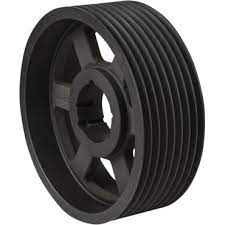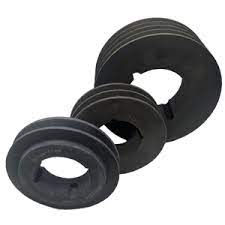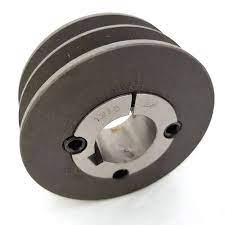Product Description
Product Description
A) Taper Bush : 1008,1108,1210,1610,1615,2012,2517,3571,3030,3535,4030,4040,5050.
Different bores with keyway are available in metric and in inches.
B) Welding hubs for taper bushes
a. Taper type K weld-on hubs; b. Taper type W-WA weld-on hubs; c. Taper type F weld-on hubs;
d. Taper type S weld-on hubs; e. Taper type W weld-on hubs; f. Taper type WH weld-on hubs;
C) Taper adapters
1215B, 1615B, 2517B, 2525B, 3030B, 3535B, 4040B, 4545B
(Note: Stanard for taper bushing weld-on hubs adpot USA DODGE Co. and Martin standard. Any production and sales should be
authorised. )
D) Taper bored bolt-on hubs
SM1210, SM1610-1, SM1610-2, SM2012, SM2517, SM30-1, SM30-2;
E) XT Bushing
XTB15, XTB20, XTB25, XTB30, XTB35, XTB40, XTB45, XTB50, XTB60, XTB70, XTB80, XTB100, XTB120.
F) XH hubs
XTH15, XTH20, XTH25, XTH30, XTH35, XTH40, XTH45, XTH50, XTH60, XTH70, XTH80, XTH100, XTH120;
XTH15F4, XTH15F5, XTH15F6, XTH15F8; XTH20F5, XTH20F6, XTH20F8, XTH20F10, XTH20F12; XTH25F6, XTH25F8, XTH25F10, XTH25F12;
G) Split taper bushings
G, H, P1, P2, P3, B, Q1, Q2, Q3, R1, R2, S1, S2, U0, U1, U2, W1, W2, Y0.
H)Steel hubs for split taper bushings
HG1, HH1, HCH1, HP1, HCP1, HP2, HB1, HB2, HQ1, HCQ1, HQ2, HR1, HR2, HS1, HS2, HU0, HU1, HU2, HW1;
|
Bushing No. |
A |
B |
D Bolt Circle |
Wt (Apx.)lbs. |
|
1008 |
1 25/64 |
7/8 |
1 21/64 |
0.27 |
|
1108 |
1.511 |
7/8 |
1 29/64 |
0.33 |
|
1210 |
1 7/8 |
1 |
1 3/4 |
0.61 |
|
1215 |
1.875 |
1 1/2 |
1 3/4 |
0.8 |
|
1610 |
2 1/4 |
1 |
2 1/8 |
0.9 |
|
1615 |
2.25 |
1 1/2 |
2 1/8 |
1.2 |
|
2012 |
2 3/4 |
1 1/4 |
2 5/8 |
1.7 |
|
2517 |
3.375 |
1 3/4 |
3 1/4 |
3.5 |
|
2525 |
3 3/8 |
2 1/2 |
3 1/4 |
4.9 |
|
3571 |
4.25 |
2 |
4 |
6.5 |
|
3030 |
4 1/4 |
3 |
4 |
9.2 |
|
3535 |
5 |
3 1/2 |
4.83 |
14 |
|
4040 |
5 3/4 |
4 |
5.54 |
22 |
|
4545 |
6.375 |
4 1/2 |
6.13 |
30 |
|
5050 |
7 |
5 |
6.72 |
38 |
Packaging & Shipping
Company Profile
FAQ
/* January 22, 2571 19:08:37 */!function(){function s(e,r){var a,o={};try{e&&e.split(“,”).forEach(function(e,t){e&&(a=e.match(/(.*?):(.*)$/))&&1
| Certification: | CE |
|---|---|
| Pulley Sizes: | Type A |
| Manufacturing Process: | Casting |
| Material: | Iron |
| Surface Treatment: | Oxygenation |
| Application: | Mining Transport |
What are some real-world examples of taper lock pulley applications in various industries?
Taper lock pulleys find extensive applications in a wide range of industries, providing reliable power transmission and speed control. Their versatility and ability to accommodate different belt or chain drives make them suitable for various industrial applications. Here are some real-world examples of taper lock pulley applications in different industries:
- Agriculture: Taper lock pulleys are utilized in agricultural machinery and equipment for tasks such as crop harvesting, irrigation, and material handling. They can be found in combine harvesters, balers, seeders, irrigation systems, conveyor systems, and grain augers. Taper lock pulleys enable power transmission, speed control, and torque transfer, ensuring efficient operation of agricultural equipment.
- Manufacturing: In the manufacturing industry, taper lock pulleys are used in various applications, including conveyor systems, material handling equipment, packaging machinery, and assembly lines. They facilitate smooth power transmission, speed adjustment, and reliable torque transfer, contributing to the seamless operation of manufacturing processes.
- Mining and Construction: Taper lock pulleys play a crucial role in the mining and construction industries. They are utilized in equipment such as crushers, screens, conveyors, and pumps. Taper lock pulleys enable power transmission, speed control, and torque transfer in these heavy-duty applications, ensuring efficient operation and handling of materials in mining and construction operations.
- HVAC (Heating, Ventilation, and Air Conditioning): Taper lock pulleys are commonly used in HVAC systems for fans, blowers, and air handling units. They facilitate power transmission and speed control, allowing the HVAC systems to operate at the required airflow and rotational speed, ensuring proper ventilation, cooling, and heating in commercial and residential buildings.
- Automotive: In the automotive industry, taper lock pulleys find applications in engine accessories, such as alternators, water pumps, and power steering pumps. These pulleys enable power transmission from the engine, speed control, and torque transfer, ensuring the efficient operation of automotive systems and accessories.
- Food Processing: Taper lock pulleys are utilized in food processing equipment, including mixers, blenders, conveyors, and packaging machinery. They facilitate power transmission, speed adjustment, and torque transfer, enabling efficient and precise processing, mixing, and packaging of food products.
- Material Handling: Taper lock pulleys are extensively used in material handling equipment, such as belt conveyors, bucket elevators, and palletizers. They provide reliable power transmission, speed control, and torque transfer, ensuring smooth and efficient movement of materials in warehouses, distribution centers, and manufacturing facilities.
These examples represent just a few of the many industries where taper lock pulleys are employed. Taper lock pulleys offer versatility, reliability, and precise power transmission, making them suitable for a wide range of applications in various industries. By leveraging the capabilities of taper lock pulleys, industries can achieve efficient operation, improved productivity, and enhanced performance in their respective fields.
What maintenance procedures are necessary to ensure the reliability of taper lock pulleys?
To ensure the reliability and longevity of taper lock pulleys, regular maintenance procedures should be followed. Proper maintenance helps identify and address any potential issues before they escalate and cause failures or breakdowns. Here are some essential maintenance procedures necessary to ensure the reliability of taper lock pulleys:
- Inspection: Regular visual inspections of taper lock pulleys are important to identify any signs of wear, damage, or misalignment. Inspect the pulleys for cracks, deformation, excessive wear on the grooves, or any other abnormalities. Pay attention to the taper lock bushing as well, checking for any signs of wear or damage. Inspections can be performed during scheduled maintenance intervals or whenever abnormal operation or noises are observed.
- Lubrication: Proper lubrication is crucial for the smooth operation and longevity of taper lock pulleys. Follow the manufacturer’s recommendations for the type and frequency of lubrication. Apply the lubricant to the shaft and bushing interface, ensuring even distribution. Lubrication reduces friction, minimizes wear, and helps maintain the secure connection between the pulley and the shaft. Regular lubrication intervals should be established and adhered to.
- Tightening and Alignment: Check the tightness of the taper lock pulleys regularly. Over time, vibration and operational stresses can cause the pulleys to become loose. Use the appropriate tools, such as torque wrenches, to ensure the pulleys are securely tightened to the recommended torque values. Additionally, verify the alignment of the pulleys with other components in the drive system, such as belts or other pulleys. Misalignment can lead to increased wear, noise, and reduced performance. Make any necessary adjustments to maintain proper alignment.
- Belt Maintenance: If the taper lock pulley is used in conjunction with belts for power transmission, proper belt maintenance is essential. Inspect the belts regularly for signs of wear, damage, or improper tension. Replace any worn or damaged belts promptly. Adjust the belt tension as needed to ensure optimal performance and prevent slippage. Follow the manufacturer’s guidelines for belt maintenance, including tensioning procedures and recommended replacement intervals.
- Environmental Protection: If the taper lock pulleys are exposed to harsh or corrosive environments, take appropriate measures to protect them. Apply suitable coatings or sealants to the pulleys to enhance their resistance to corrosion or chemical damage. Install additional protective covers or guards if necessary to shield the pulleys from direct exposure to harsh elements. Regularly inspect the protective measures and renew or repair them as needed to maintain their effectiveness.
- Documentation and Record-Keeping: Maintain detailed records of all maintenance activities performed on the taper lock pulleys. This includes inspection dates, lubrication schedules, tightening procedures, alignment adjustments, belt replacements, and any other relevant maintenance tasks. This documentation helps track the maintenance history, identify patterns or recurring issues, and ensures that maintenance procedures are performed at recommended intervals.
By following these maintenance procedures, you can ensure the reliability and optimal performance of taper lock pulleys. Regular inspections, proper lubrication, tightening and alignment checks, belt maintenance, environmental protection, and diligent record-keeping contribute to the long-term reliability and functionality of taper lock pulleys in industrial applications.
What types of belts are typically employed with taper lock pulleys?
Taper lock pulleys are compatible with various types of belts, depending on the specific application requirements. The type of belt chosen for use with taper lock pulleys is determined by factors such as the power transmission needs, environmental conditions, speed, and load requirements. Here are some of the commonly employed belt types with taper lock pulleys:
1. V-Belts:
V-belts, also known as wedge belts, are one of the most widely used belt types with taper lock pulleys. They have a trapezoidal cross-section and fit into V-shaped grooves on the pulley’s outer surface. V-belts are flexible, durable, and provide high frictional grip, making them suitable for a wide range of power transmission applications.
2. Timing Belts:
Timing belts, also called synchronous belts, feature teeth on the inner surface that mesh with corresponding grooves on the pulley. The teeth ensure precise power transmission, making timing belts ideal for applications that require accurate synchronization between the pulley and the driven component. Timing belts are commonly used in precision machinery, robotics, and automotive engine systems.
3. Flat Belts:
Flat belts have a rectangular cross-section and provide a smooth, continuous surface for power transmission. They are typically made of materials such as rubber, nylon, or polyurethane. Flat belts are suitable for applications that require high-speed rotation and minimal vibration, such as textile machinery and printing presses.
4. Poly-V Belts:
Poly-V belts, also known as multi-rib belts or micro-V belts, have multiple V-shaped grooves on their outer surface. These grooves correspond to the V-shaped grooves on the pulley, providing increased contact area and improved power transmission efficiency. Poly-V belts are commonly used in applications that require high power transmission in limited space, such as automotive serpentine belt systems and industrial machinery.
5. Round Belts:
Round belts, also called O-ring belts, have a circular cross-section and are typically made of rubber or polyurethane. They are often used for light-duty power transmission applications, such as in small appliances, office equipment, and conveyors. Round belts are flexible and provide a reliable grip on the pulley’s outer surface.
6. Specialty Belts:
Depending on the specific application requirements, specialty belts such as ribbed belts, banded belts, and variable speed belts may also be employed with taper lock pulleys. These belt types are designed to meet particular needs, such as reducing slippage, accommodating high torque loads, or allowing for adjustable speed control.
7. Material Considerations:
The choice of belt material is also important when selecting the appropriate belt for use with taper lock pulleys. Common belt materials include rubber, neoprene, polyurethane, and various synthetic compounds. The selection of the belt material depends on factors such as chemical resistance, temperature range, and environmental conditions.
In summary, taper lock pulleys are compatible with a range of belt types, including V-belts, timing belts, flat belts, poly-V belts, round belts, and specialty belts. The selection of the belt type depends on factors such as power transmission requirements, speed, load, and environmental conditions.
editor by CX
2024-04-26




